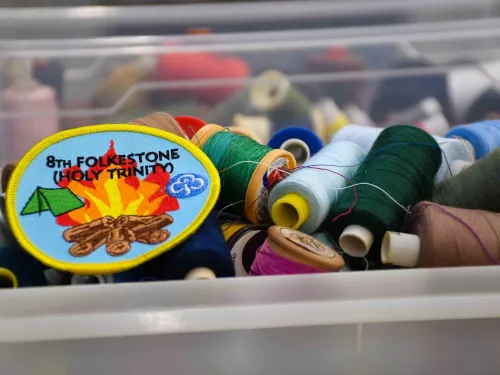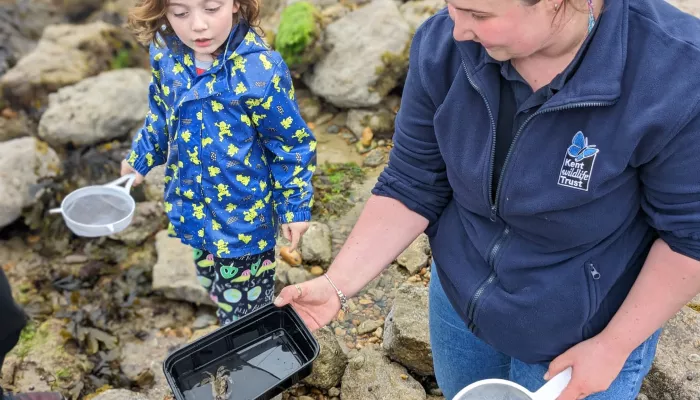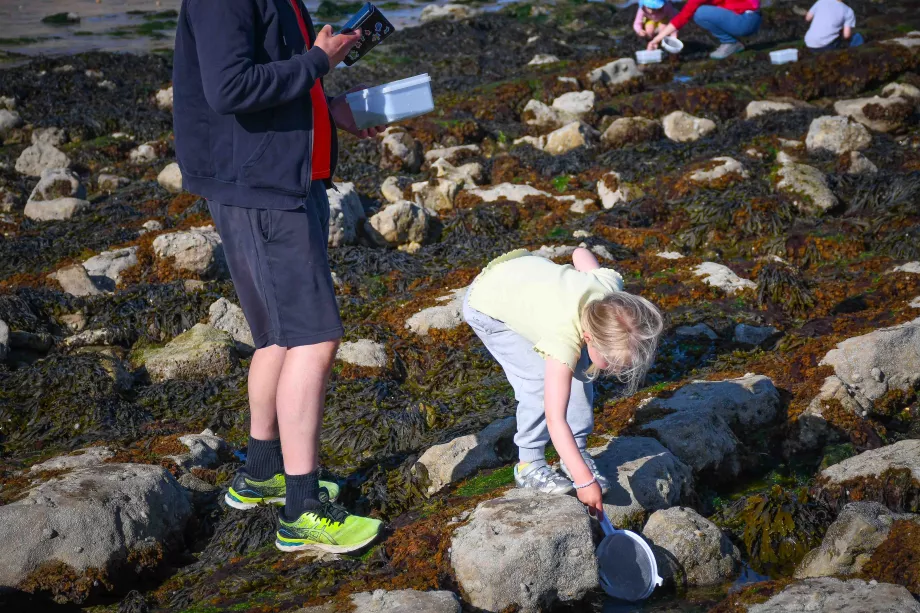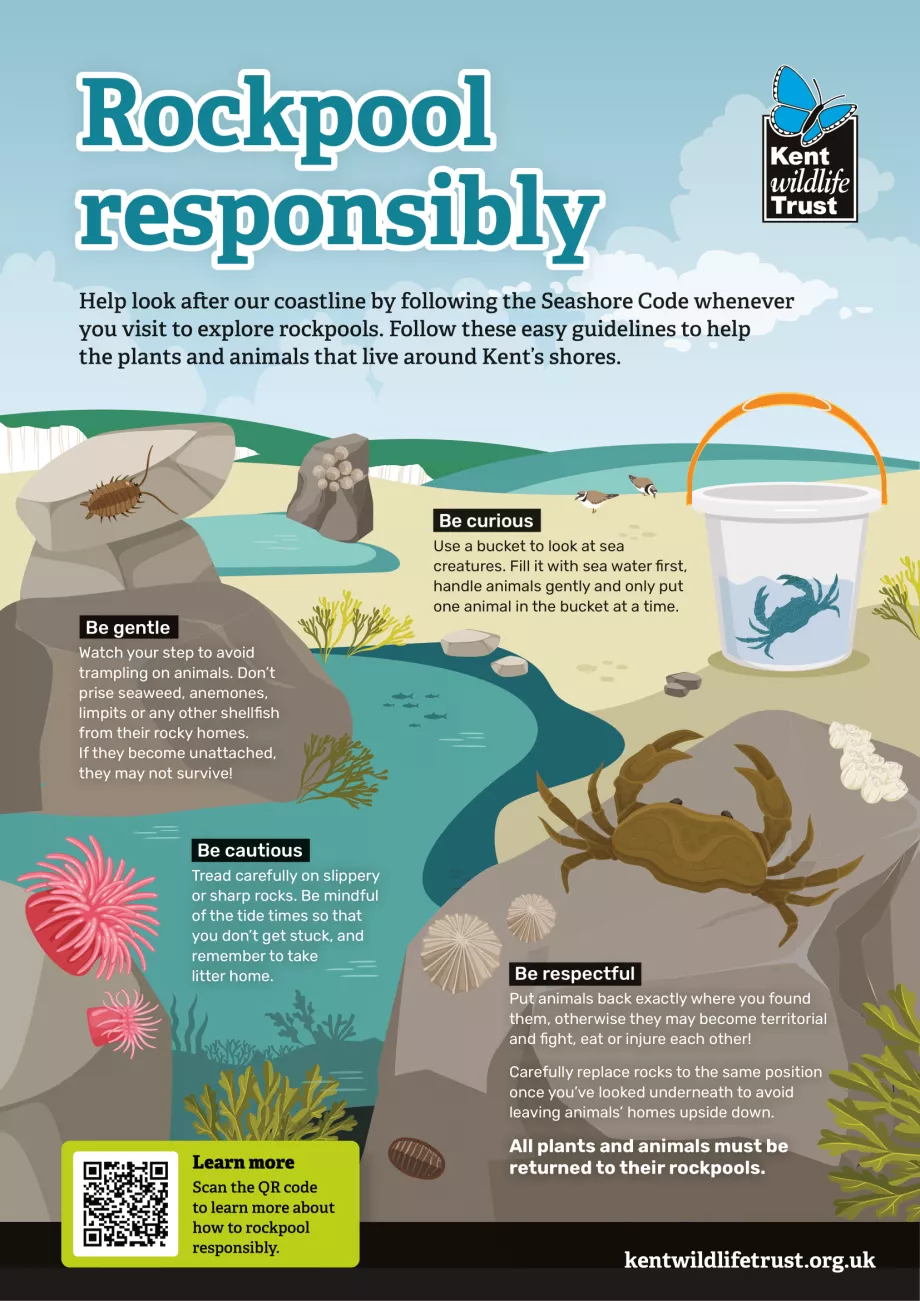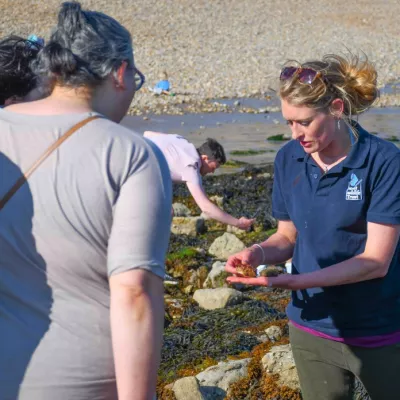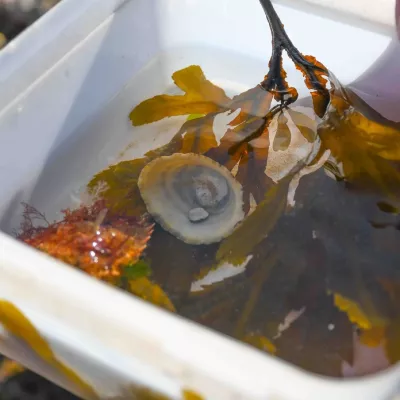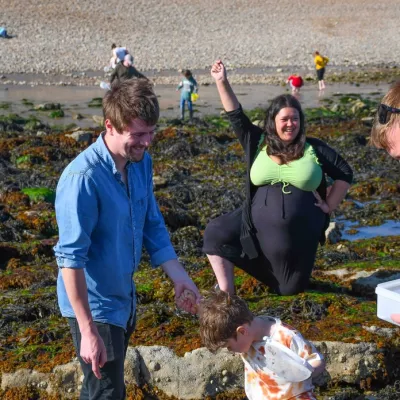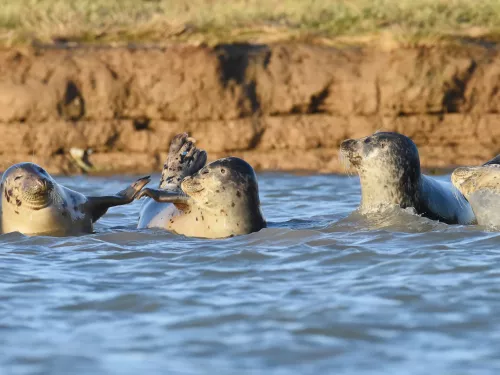Top tips for rockpooling
- Plan your visit for low tide when more rock pools will be exposed.
- Fill your bucket with sea water before you put any animals in it, as all wildlife you might find needs water to take in oxygen.
- Approach a rock pool quietly so you don't scare off the wildlife and try not cast a shadow over the water or you might be look like a predator.
- Be patient and remain still while your are looking at a rockpool and you will start to see animals in the pool.
- Carefully turn over stones to see if there are creatures hiding underneath. Remember to replace stones the way you found them as gently as you can.
- Only put one animal in your bucket at a time otherwise they meet fight.
- Look your creatures up on an ID guide (check out our Seashore Safari Guide)
- Be careful not to harm any creatures. Once you've finished studying your specimens, return them carefully to the pool by re-submerging your bucket. Don't leave them in the bucket for too long, as they can get stressed by temperature changes.
How to keep safe
- Dress appropriately - be prepared for the British weather and remember rocks can be slippery and sharp so thick-soled footwear with good grip is recommended.
- Check the tides before you go and keep an eye out to make sure you don’t get trapped.
- Look out for sharp object like fishhooks or broken glass.
Wildlife to spot and among some of the easiest to see, even in the highest rockpools, include seaweeds like serrated wrack and animals like edible winkle, shore crab and common prawn. There are plenty of other species to see so why not download this rocky shore guide below to find more out about the kind of animals you might get to spot.
